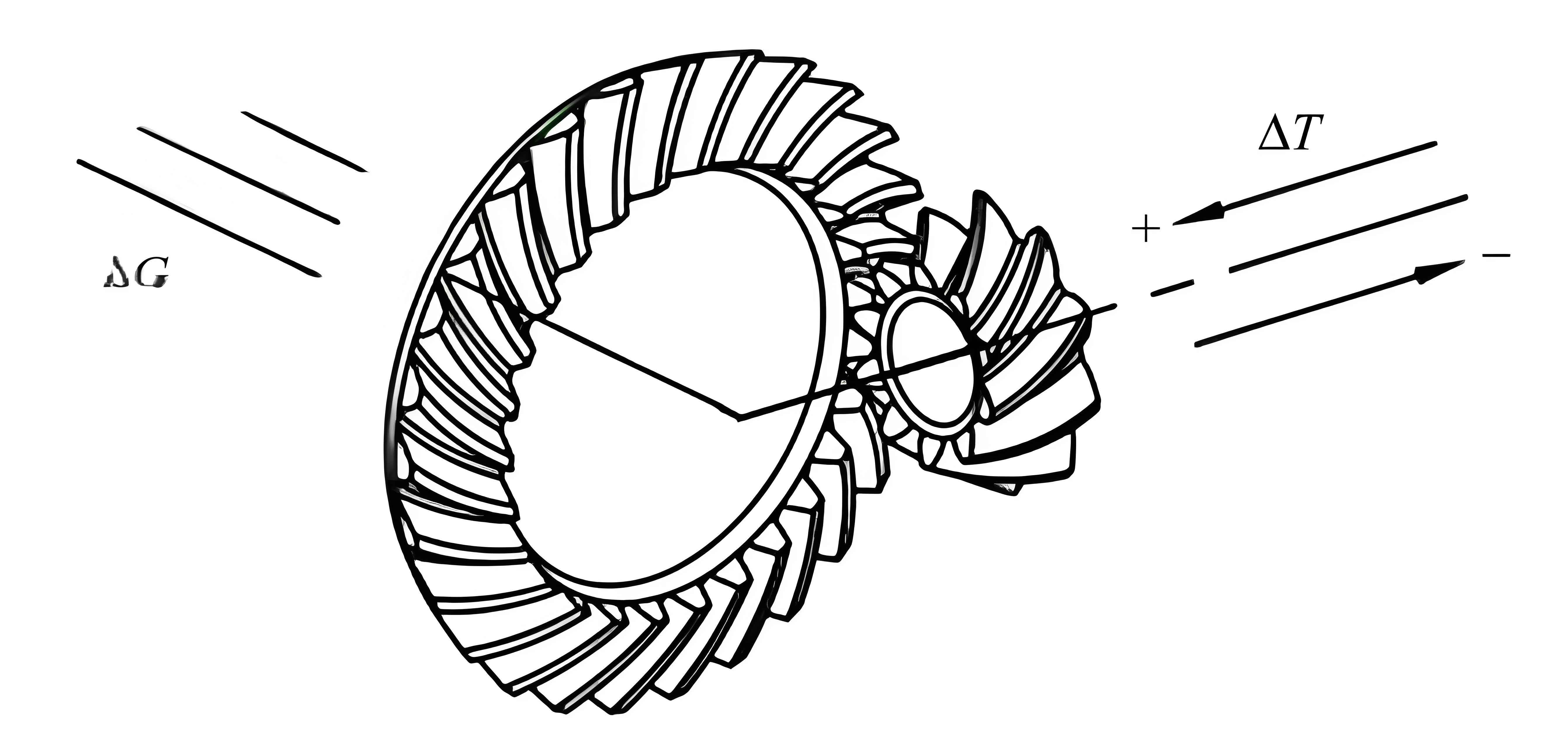Abstract
This article takes the heavy-duty spiral bevel gear transmission system as the research object, based on gear strength calculation theory, fatigue cumulative damage theory, and fracture mechanics theory, combined with domestic spiral bevel gear manufacturing processes and manufacturing technology, to study the fatigue characteristics of the heavy-duty spiral bevel gear transmission system.

Keywords: overloading; spiral bevel gear; bending fatigue; cracks; life prediction
1. Introduction
Heavy-duty spiral bevel gear is the primary transmission components in transmission systems. Due to complex operating conditions, gears are subjected to alternating loads during actual use, leading to fatigue cracks. These cracks continue to propagate, ultimately causing fatigue failure of the gears. As the contradiction between the fatigue issues of spiral bevel gear and the increasing demand for high transmission power and lightweight design becomes increasingly acute, the prediction of gear tooth fatigue life has become an inevitable problem in the development of transmission technology.
This paper comprehensively analyzes the fatigue development process of heavy-duty spiral bevel gear, considering bending fatigue crack initiation, bending fatigue crack propagation, contact fatigue crack initiation, and contact fatigue crack propagation. By summarizing the existing research and manufacturing processes of spiral bevel gear, this paper provides a comprehensive approach to predicting their fatigue life.
2. Research Status of Spiral Bevel Gear
2.1 Overview
Spiral bevel gear has undergone significant development since their inception. The following summarizes the research status and key milestones in the field:
| Period | Milestone Events and Developments |
|---|---|
| 1960s | Gleason Corporation developed spiral bevel gear using generating and forming methods, relying on empirical knowledge. |
| 1970s | Chinese scholars integrated Gleason technology to form a domestic technical system, conducting in-depth research on tooth surface optimization, meshing characteristics, and contact pattern sensitivity. |
| Mid-1980s | Gleason introduced the Phoenix 450 series spiral bevel gear CNC milling and grinding machines, significantly improving precision, rigidity, structure, and adjustment efficiency. |
| Present Day | Free-Form CNC machines are widely used for spiral bevel gear manufacturing worldwide, with advanced processing theories and methods. |
2.2 Domestic and Foreign Differences
Currently, spiral bevel gear manufacturing theory is relatively mature, but there is still a significant gap in manufacturing accuracy and efficiency between domestic and foreign technologies. The following table summarizes the main differences:
| Aspect | Domestic Status | Foreign Status |
|---|---|---|
| Manufacturing Theory | Mature but requires further refinement | Highly developed and optimized |
| Machining Precision | Generally 7th or 8th grade | High precision (4th or 5th grade) |
| Efficiency | Lower due to equipment limitations | Higher due to advanced equipment |
| Material Properties | Limited range of materials used | Wider range of materials applied |
3. Manufacturing Processes of Spiral Bevel Gear
3.1 Manufacturing Methods
3.1.1 Milling
Spiral bevel gear consist of driving and driven gears. The milling methods for the driving gear include the blade tilt method and the deformation method, while the driven gear uses the generating and forming methods. These methods require theoretical calculations to adjust tool and machine parameters. Milling is commonly used for rough machining, leaving a margin for finish grinding after heat treatment.
| Method | Application | Characteristics |
|---|---|---|
| Blade Tilt Method | Driving gear milling | Requires precise adjustment of tool angles |
| Deformation Method | Driving gear milling | Involves deforming the gear tooth surface |
| Generating Method | Driven gear milling | Produces a conjugate tooth surface through meshing |
| Forming Method | Driven gear milling | Uses preformed tools to shape the tooth surface |
3.1.2 Grinding
Grinding is a precision process used for finish machining after heat treatment. It enhances tooth surface accuracy and solves interchangeability issues. The grinding methods for driving and driven gears differ:
| Gear Type | Grinding Method | Characteristics |
|---|---|---|
| Driving Gear | Double-sided grinding | Simultaneous grinding of convex and concave tooth surfaces |
| Driven Gear | Single-sided grinding | Sequential grinding of convex and concave tooth surfaces |
For the driving spiral bevel gear, the double-sided grinding method is adopted, where both the convex and concave tooth surfaces are simultaneously ground by the inner and outer sides of a cup-shaped grinding wheel. Conversely, for the driven spiral bevel gear, the single-sided grinding method is employed, which involves grinding the convex tooth surface with the inner side of the cup-shaped grinding wheel and the concave tooth surface with the outer side, without simultaneously grinding both surfaces. The grinding parameters are derived through complex calculations using grinding adjustment formulas or software, taking into account potential issues such as grinding burns and cracks. This precision grinding process typically achieves a tooth surface accuracy of grade 4 or 5, significantly enhancing the quality and performance of the spiral bevel gear.
